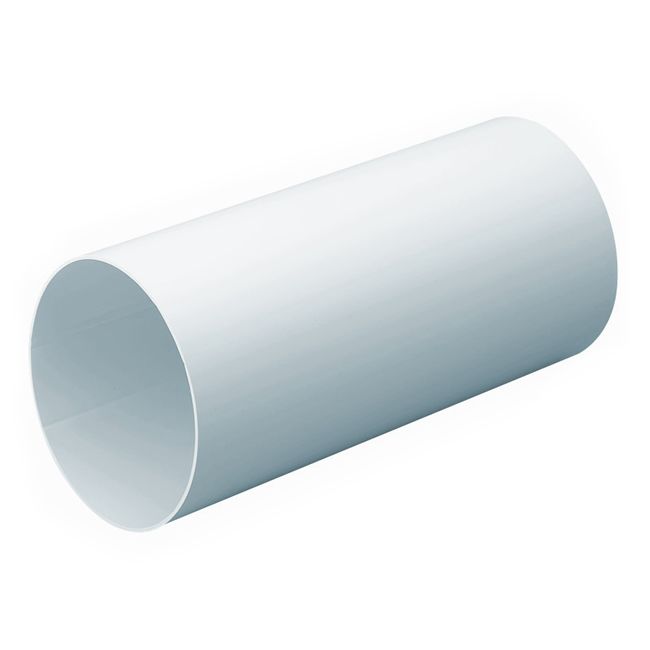Flexible Or Rigid Duct For Bathroom Fan
There are lots of ways to duct a bathroom fan, but what are the best ways?
PVC Flexible Ducting
This is what most people fit, and why not, it's easy and cheap. It requires few additional accessories, except for maybe some clips, tie-wraps or duct tape to fasten it onto the fan spigot and the grille. You can bend it anywhere to suit your route and even squash it a bit if space is limited.
Why PVC flexible ducting might not be the best way to go:
- Poor performance due to the ribs restricting the airflow
- Extra bends due to 'sagging' also restrict airflow
- Poor insulation (leads to condensation)
- Can easily tear
So what is the best way to Duct a Bathroom Fan?
Depending on your requirements, you should consider using the following types of products if you want high-performing and efficient ductwork, which allows your fan to do its job properly.
The good news is, that it doesn't need to cost much to do the job right, because ducting & accessories are cheaper than they've ever been!
1. Use Solid Ducting Wherever You Can
The smooth sides of solid ducting provide a huge increase in performance:
- Smooth sides allow the air to travel through the ducting without being impeded by 'ribs' and 'imperfections' associated with flexible duct
- The fabricated bends maintain this smooth air passage (Use them sparingly though)
- Good ducting 'push-fits' but you can make the joint airtight with a good duct sealant
- It's very easy to cut and fit the accessories
2. Round or Flat Ducting
If you have enough room in the void, then always go for round ducting as this gives the best overall airflow performance through the system.
If you just don't have the height, then go for flat ducting next. Its performance is not quite as good as round, but its still way better than flexible ducting and the same benefits apply.
The choice of flat ducting profiles is huge so you can get the appropriate size for your project. You will need adapters to convert from the round spigots on your fans, but these are readily available.
NB - Try not to use Tee pieces or Y pieces, they inhibit airflow massively and its always best to use separate duct runs for each fan and outlet.
3. Insulate Your Ducting to Prevent Condensation
This used to be fiddly and expensive but now it's just a few quid to add some decent insulation to your duct project and prevent potential damage caused by condensation. The best stuff comes in two parts(both the pipe and the bends) so that you can retrofit the insulation sleeve at the end of the job quickly and easily.
You could, of course, buy pre-insulated flexible ducting, but again, it's nowhere near as good a job in terms of airflow performance.
4. Firewalls
If you're taking ducting through a firewall, you must fit intumescent fire-sleeve connectors. The good news is that these previously expensive items have plummeted in price, so there's really no need to avoid them.
Fire-sleeves are now available for most round and flat ducting profiles.
5. Airbricks or Grilles?
Instead of fitting a standard square grille, consider fitting a plastic airbrick instead. They're more efficient than the grilles (particularly better than those noisy, chattering gravity grilles!).
They're available in a wide range of colours and you can buy an adaptor which converts from 100mm,125mm & 150mm straight to the brick in one accessory. Costs a bit more, but a much neater and more efficient solution.
Hopefully that's given you some practical ideas of how to 'up your ducting game' - You will be miles ahead of your competition using these simple low-cost options instead of running the old flexi-duct.
If you need any help with your ducting projects either by design or project quotations, then please feel free to get in touch with us here.

Flexible Or Rigid Duct For Bathroom Fan
Source: https://www.fastlec.co.uk/blog/what-duct-to-use-for-a-bathroom-fan/

Komentar :
Posting Komentar